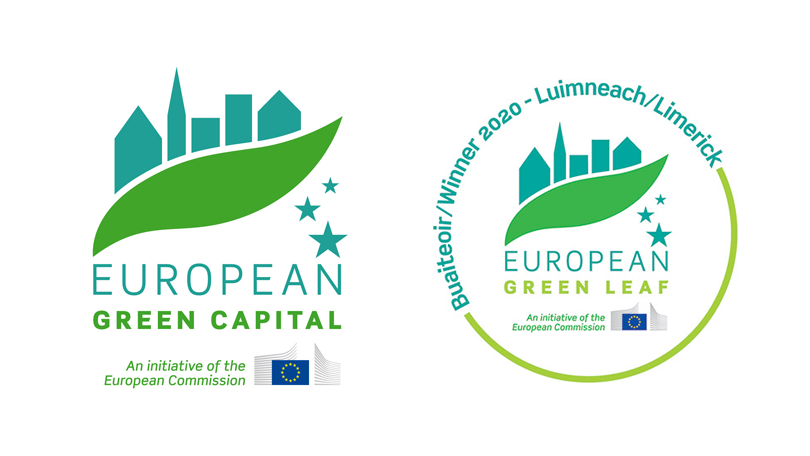Until 15 April, the European cities most committed to environmental sustainability can apply for the 2027 edition of the award. No Italian city has ever been “European Capital”. Spain and Portugal have already been twice each.
Among the many environmental challenges facing Europe, with its vast urbanised population, is that of pushing its cities to become increasingly sustainable and liveable.
In fact, 39% of the EU population lives in large urban centres, 36% in suburbs or medium-sized cities and only 25% in rural areas.
The European Commission has long recognised the importance of the role of local authorities as the only ones capable of understanding, addressing and solving environmental problems. And it is precisely to encourage and support the efforts of European cities working to improve the quality of life of their citizens and reduce the global climate impact that two initiatives were born:
– European Green Capital Award (EGCA), for cities with more than 100,000 inhabitants
– European Green Leaf (EGL) , reserved for smaller cities of at least 20,000 inhabitants.
So far, 17 cities have been awarded the title of European Green Capital, while 19 smaller cities have won the European Green Leaf Award, creating a growing network of pioneering cities that share experiences, inspire other cities to behave virtuously and promote the wider ambitions of the European Green Pact, the New European Bauhaus and the Zero Pollution Action Plan.
The winner of the EGCA will receive 600,000 euros, while the winner of the EGL will receive 200,000 euros.
Interested cities can apply online until 15 April 2025. To participate, please fill in the application form using this link.
What is the European Green Capital Award (EGCA)?
The European Green Capital Award is the result of an initiative launched in 2006 in Tallinn (Estonia) by 15 European cities and the Association of Estonian Cities. The award was first presented to Stockholm, the capital of Sweden, in 2010. Here are the other cities that have received the award
2011: Hamburg (Germany)
2012: Vitoria-Gasteiz (Spain)
2013: Nantes (France)
2014: Copenhagen (Denmark)
2015: Bristol (United Kingdom)
2016: Ljubljana (Slovenia)
2017: Essen (Germany)
2018: Nijmegen (The Netherlands)
2019: Oslo (Norway)
2020: Lisbon (Portugal)
2021: Lahti (Finland)
2022: Grenoble (France)
2023: Tallinn (Estonia)
2024: Valencia (Spain)
2025: Vilnius (Lithuania)
2026: Guimarães (Portugal)
What is the European Green Leaf (EGL)?
Given the success of the European Green Capital Award since its first edition in 2010, and in view of the peculiar distribution of Europe’s urbanised population, which lives equally in large metropolises and small cities, the European Union launched a second award in 2015.
This is the Green Leaf Award, reserved for cities with a population between 20,000 and 99,999 inhabitants. Unlike the “main” award, where only one winner is allowed, the EGL allows two cities to be awarded each year.
The advantages of these European awards
Becoming a Green Capital of Europe (or “Green Leaf”) is an award that provides significant and lasting benefits that are not limited to a single year, but leave a positive long-term legacy. One of the first positive impacts is favourable press coverage and social media attention, which contribute to the image of a sustainable city. Increased international reputation generates new possibilities for institutional collaboration and new economic opportunities related to the export of green products, processes and services. In addition, recognition stimulates greater interest in environmental projects, encouraging targeted investment and sponsorship. Being a Green Capital is also a moment of pride for citizens, who see their sense of belonging and local identity strengthened. This collective spirit further motivates administrations to continue on the path of sustainability, creating a positive momentum that goes beyond the award year.
The title also allows them to be part of the European Green Capital Network, a community that shares experiences and best practices, which guarantees participation in prestigious international events, as well as the constant support of the European Commission and the Award Secretariat. In 2014, during its year as European Green Capital Award winner, the city of Copenhagen launched this network that brings together not only the winners but also the finalist cities, creating a space for debate and collaboration on sustainable urban development.
The Network is chaired by the European Commission, in close cooperation with the winning city of the current year and is automatically extended with each new edition of the award. To date, the Network has 36 members.
There is also the European Green Leaf Network, which brings together smaller cities that have the same level of ambition and commitment to environmental sustainability as large metropolises.
The creation of these networks demonstrates that cooperation is a key element in tackling global environmental challenges. Thanks to this synergy, European cities are charting a course towards a greener and more inclusive future, where the environment and the well-being of citizens are at the heart of urban policies.
Criteria for selecting the winners
A panel of independent urban sustainability experts will assess the candidate cities against seven environmental criteria: air quality, water management, biodiversity and green spaces, sustainable land use, waste management and circular economy, noise pollution and actions to mitigate and adapt to climate change. The experts will examine the different dossiers and formalise their preferences. After further verification, the Commission will announce the names of the finalist cities, which will have to provide more details on their sustainable governance strategy between June and July 2025 and submit a final document to the jury. The winners will be selected in October 2025.



